Pivot Shuttle SL
Wheel Size: 29’’
Travel: 132 mm rear / 140–150 mm front
Geometry Highlights (150 mm fork, “low” geo position):
- Sizes offered: SM, MD, LG, XL
- Headtube angle: 65º
- Reach: 478 mm (size Large)
- Chainstay length: 434 mm (size Large)
Frame Material: Carbon
Price: Complete bikes: $8,999 – $13,199
Blister’s Measured Weight: 39.38 lb / 17.86 kg (Team XTR, size Large, tubeless)
Test Locations: Buena Vista & Crested Butte, CO
Reviewers:
- Simon Stewart: 6’, 170 lbs / 183 cm, 77 kg
- Dylan Wood: 5’10.5″, 160 lbs / 179 cm, 72.5 kg
Test Duration: 3 months
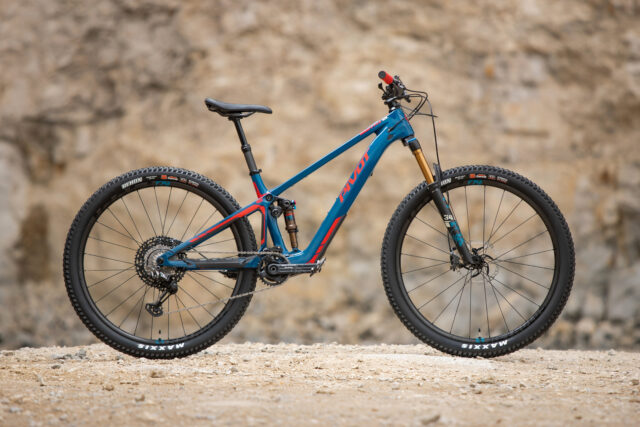
Intro
The Pivot Shuttle has been around for a few years now, and today they’re launching the new Shuttle SL. But it’s definitely not just the original model on a diet — the Shuttle SL has an entirely different frame layout, less travel, substantially different geometry, a different drive unit, and so on. And the Shuttle SL comes in at an eye-popping claimed weight of 36.25 lb / 16.4 kg for the lightest Team WC model.
The Frame
The Shuttle SL, of course, uses Pivot’s standard DW-Link suspension layout, with the newer vertically-oriented shock that they’ve been moving to in recent years. It’s offered in carbon fiber only and features 132 mm of rear travel, paired with either a 140 or 150 mm travel fork, depending on the build. Pivot’s standard geometry-adjusting flip chip is featured here as well (see the Geometry section, below, for more details). The Shuttle SL rolls on 29’’ wheels at both ends and features fully internal cable routing, molded rubber chainstay and seatstay protection, and some additional armor on the underside of the downtube. An integrated upper chainguide is included, as is a water bottle mount inside the front triangle, plus an extra accessory mount underneath the top tube.
Unlike the full-power Shuttle, which uses a Shimano EP8 drive unit, the Shuttle SL uses the Fazua 60 motor, which offers less peak power and torque (450 W and 60 Nm, vs. 500 W and 85 Nm for the EP8), but is also lighter (1.96 kg vs. 2.6 kg) and is claimed to fully disengage from the cranks when not providing electronic assistance to reduce noise and drag. The Fazua system uses their “Ring Control” system to toggle between ride modes (more on those in a minute), which is designed to work well with left-hand dropper post levers, including under-the-bar versions, while an LED display in the top tube indicates battery level. A phone app can connect to the system via Bluetooth to customize the different ride modes, perform software updates, and so on. The Fazua drive system also features ANT+ capability to connect to certain smart devices. A USB-C port under the display can be used to charge your phone or other accessories off the bike’s battery.

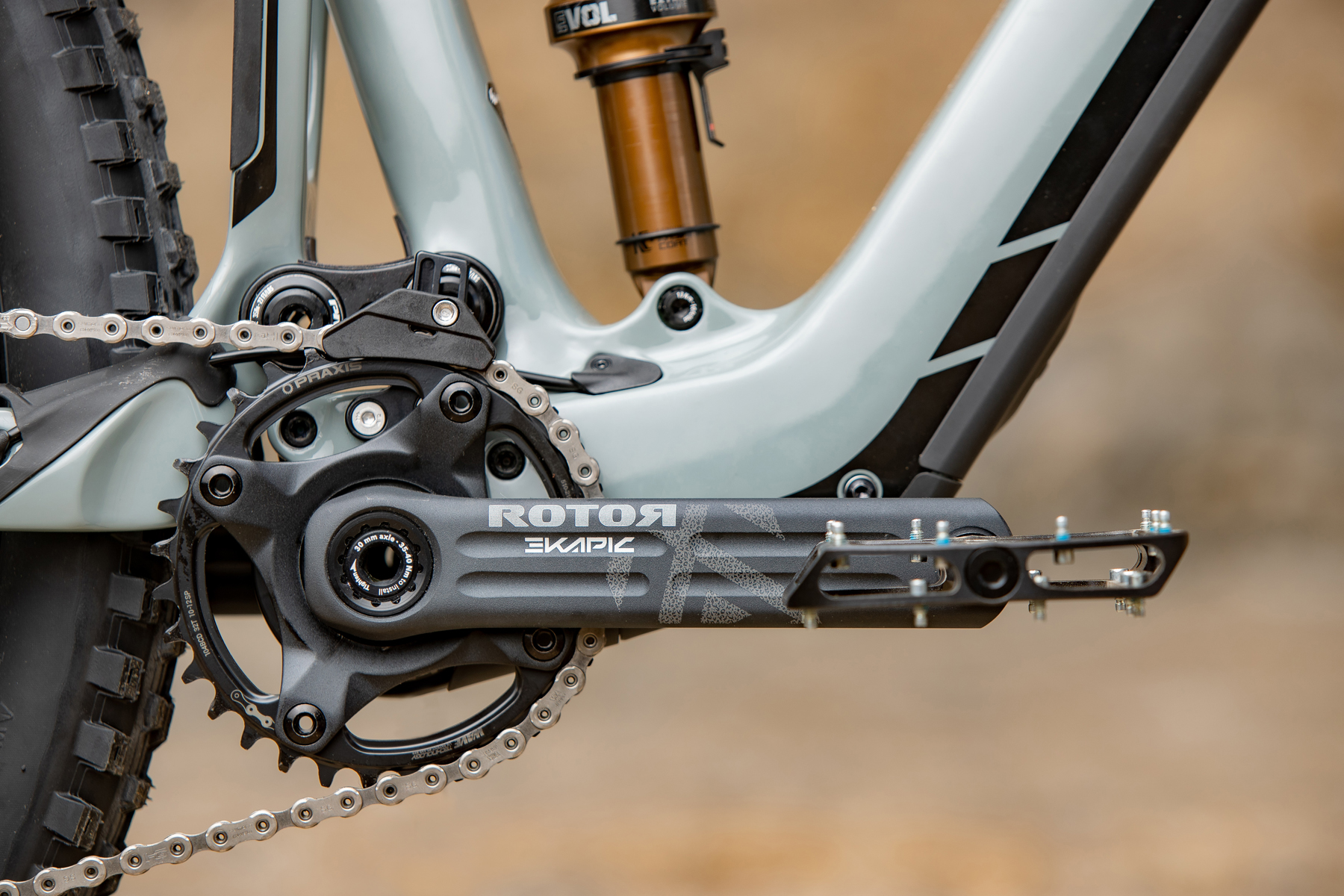
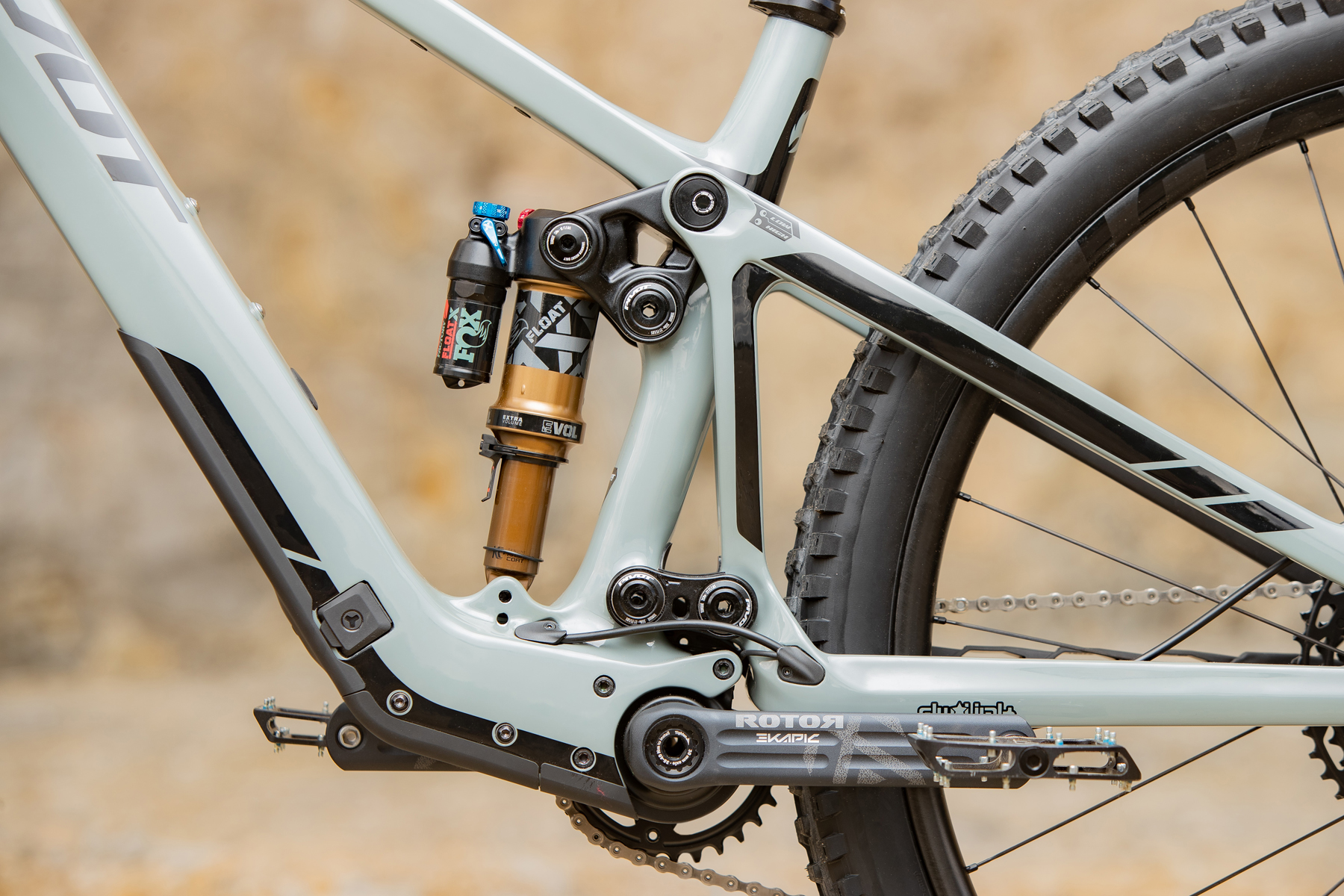

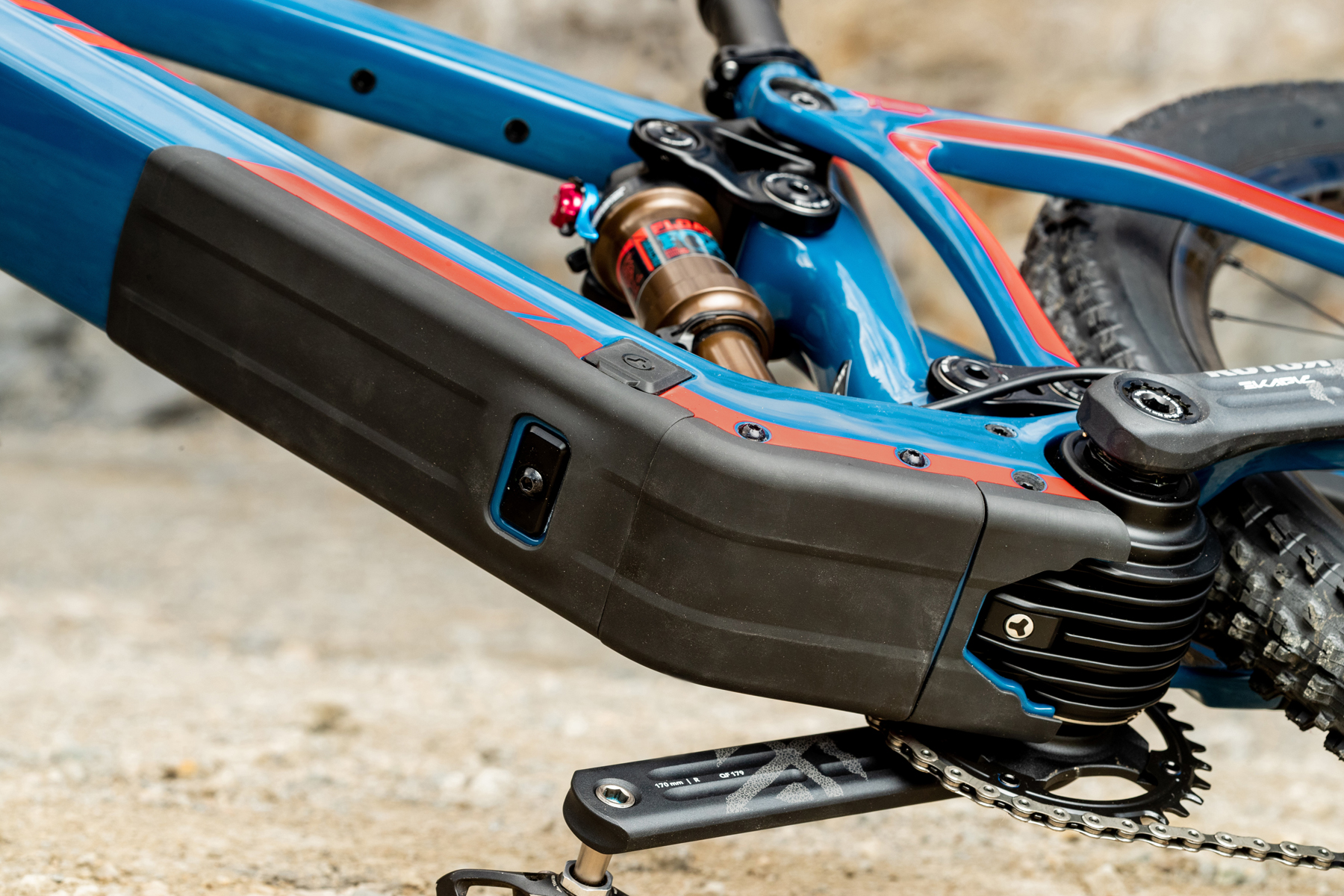
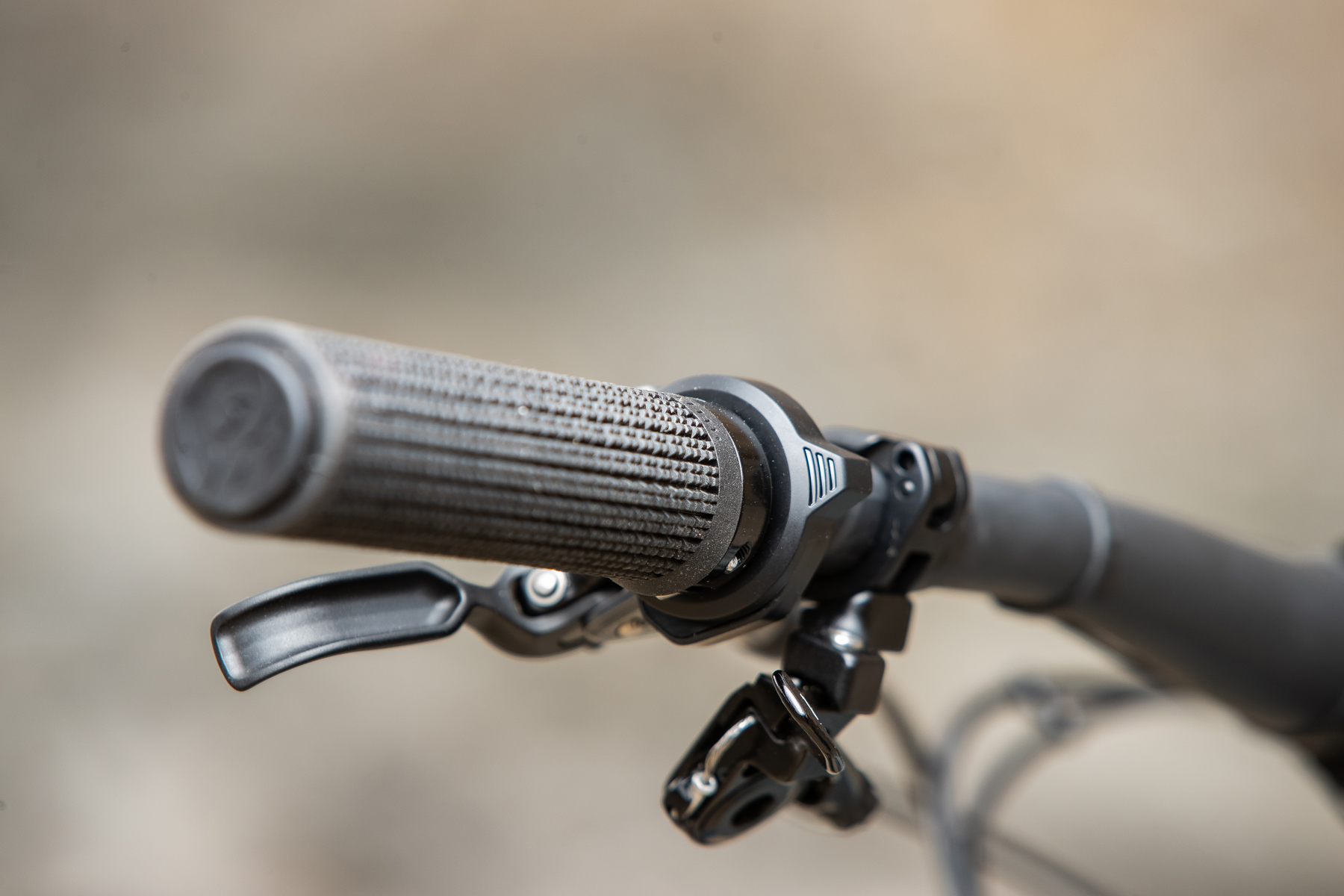
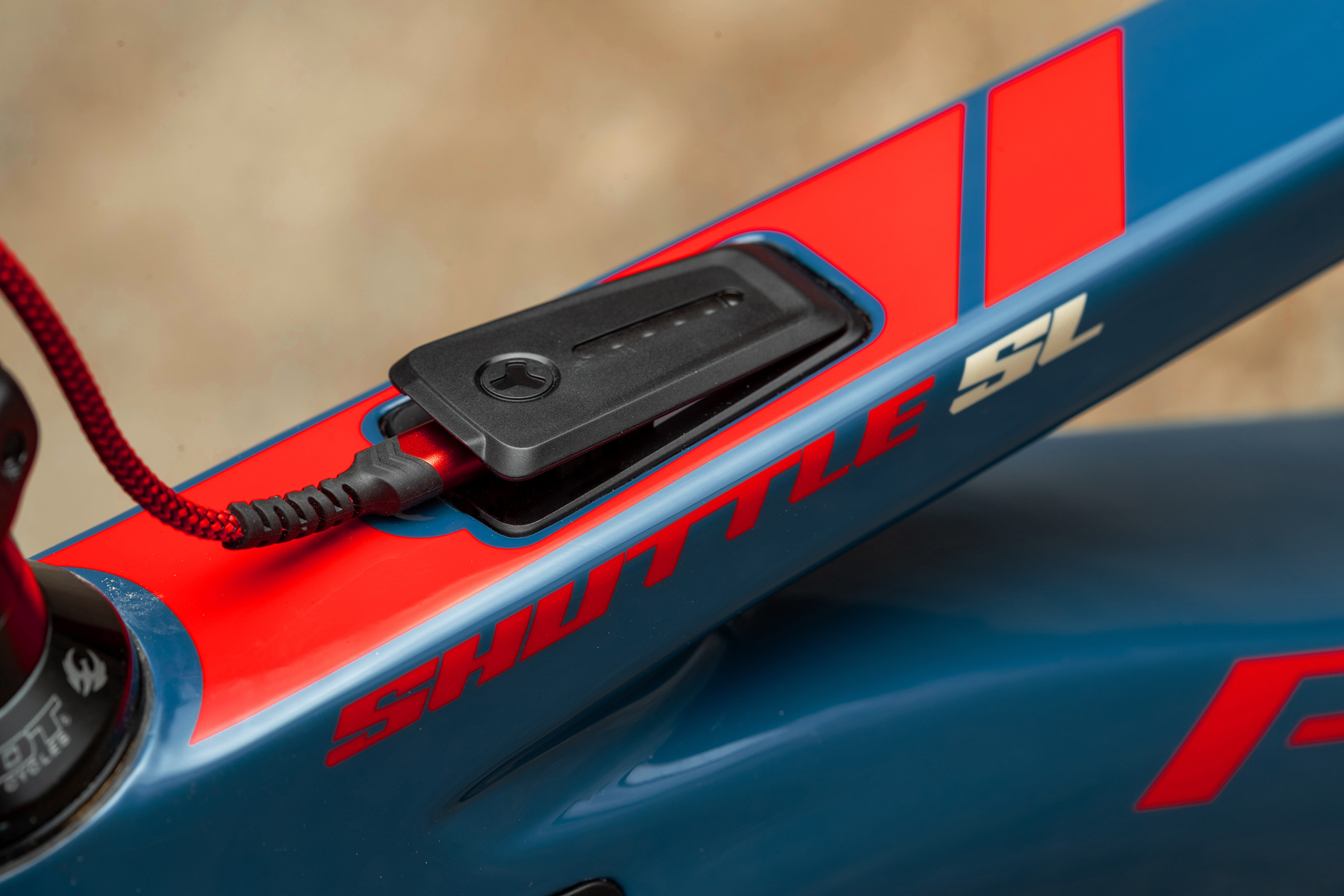
Fazua calls their three riding modes “Breeze,” “River,” and “Rocket,” to indicate the level of assistance they provide; each can be customized through the Fazua app to tailor the exact parameters to your preferences. A walk mode is also featured.
The Shuttle SL uses the fixed version of the Fazua 430 Wh battery, which saves over 500g compared to the removable version, but can’t be exchanged for a second battery on the fly; you’ll need to wait for a recharge. The stated recharge time from a completely dead battery is 3.5 hours, and charging is done through an integrated port on the side of the downtube. Pivot does say that it’s possible to remove the battery for maintenance or replacement if needed, but that doing so involves a complex procedure, including removing the motor, so it’s not recommended for day-to-day use or quick battery swaps. Fazua does have an external 210 Wh range extender battery coming in 2023, and the Shuttle SL is designed to work with it.
Fit & Geometry
Pivot offers the Shuttle SL in four sizes, Small through XL, with reaches ranging from 435 mm to 500 mm; interestingly, the Medium and Large are quite tightly grouped at 465 mm and 478 mm, respectively (the jumps at the ends of the range are significantly bigger). All sizes get a 65° headtube angle (low geometry position) and the effective seat tube angle is 76° in the smaller three sizes, with the XL getting steeper by 0.8°; the high geometry position steepens the bike by 0.5° and raises the bottom bracket by 5 mm (to 22 mm BB drop, from 27).
The Shuttle SL features variable chainstay length by size, as Pivot has been doing with a lot of their recent bikes. That said (and especially for an e-bike) they’re on the shorter side of average, at 432 mm for the Small and Medium, 434 mm on the Large, and 438 mm on the XL. All that adds up to wheelbases that range from 1,186 mm to 1,272 mm — sensibly moderate, for a bike that’s meant to be more of a versatile all-rounder than a full-on gravity-oriented bike.
[It’s also worth noting that the Team World Cup build comes with an external lower headset cup to compensate for the shorter 140mm-travel fork, so its geometry is unchanged, despite the change in fork axle to crown height.]
The Builds
Pivot tends to offer a ton of different builds on a lot of their bikes, but the offerings on the Shuttle SL are a little more pared down. There are four builds, with prices ranging from $8,299 to $11,999, and the three less-expensive options all feature 150mm-travel Fox 36 forks, a Float X rear shock, and so on. The Team WC build steps down to a 140mm-travel Fox 34 fork and a DPS shock, Maxxis Recon tires (from Dissectors on the other builds), and a 180 mm front brake rotor in the name of weight savings.
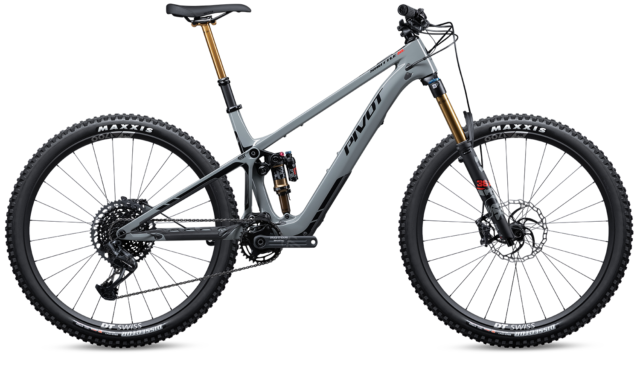
- Drivetrain: Shimano SLX w/ XT rear derailleur
- Brakes: Shimano SLX 4-piston w/ Galfer rotors (203 mm front / 180 mm rear)
- Fork: Fox 36 Performance E-MTB (150 mm travel)
- Shock: Fox Float X Performance
- Wheels: DT Swiss M1900
- Dropper Post: e*thirteen Vario (S/M: 150–180 mm; L/XL: 180–210 mm)
- Drivetrain: SRAM X01
- Brakes: Shimano XT 4-piston w/ Galfer rotors (203 mm front / 180 mm rear)
- Fork: Fox 36 Factory E-MTB (150 mm travel)
- Shock: Fox Float X Factory
- Wheels: DT Swiss XM1700
- Dropper Post: Fox Transfer Factory (S: 150mm; M/L: 175mm; XL: 200 mm)
- Drivetrain: Shimano XTR
- Brakes: Shimano XTR 4-piston w/ Galfer rotors (203 mm front / 180 mm rear)
- Fork: Fox 36 Factory E-MTB (150 mm travel)
- Shock: Fox Float X Factory
- Wheels: Reynolds Blacklabel 309/289 XC w/ Industry Nine Hydra hubs
- Dropper Post: Fox Transfer Factory (S: 150mm; M/L: 175mm; XL: 200 mm)
- Drivetrain: Shimano XTR
- Brakes: Shimano XTR 4-piston w/ Galfer rotors (180 mm front and rear)
- Fork: Fox 34 Factory E-MTB (140 mm travel)
- Shock: Fox Float DPS Factory
- Wheels: Reynolds Blacklabel 309/289 XC w/ Industry Nine Hydra hubs
- Dropper Post: KS LEV Ci (S: 150mm; M–XL: 175mm)
FULL REVIEW
The Shuttle SL just had its second birthday this August, and it’s one of the pioneers in the light-assist eMTB category. Pivot had been riding and testing prototype Shuttle SLs without a motor while they waited for the Fazua Ride 60 drive system to be ready, which allowed them to be one of the first to implement it. A lot has changed in the fast-moving eMTB world since then, but thanks to the geometry revolution having calmed down, and a motor that is still very much current, the Shuttle SL looks like a bike that could launch today.
We’ve put loads of miles on the Shuttle SL as well as many other light-assist eMTBs. So how does one of the original lightweight lower-powered eMTBs stand up against the new talent in the hot light-assist eMTB category? Let’s get into it.
But first, check out our first “Head to Head” video where we directly compare the Pivot Shuttle SL to the Norco Fluid VLT 130:
Fit & Sizing
Simon Stewart (6’, 170 lbs / 183 cm, 77 kg): I mentioned in my initial Flash Review of the Shuttle SL that the overall fit for me on the size Large Shuttle SL was quite good, but I felt that the stack height was on the low side, necessitating a handlebar swap. Pivot’s other eMTBs, the Shuttle AM and Shuttle LT, both have considerably higher stack heights and my time on them helped cement my preference for higher bars on eMTBs. I go into detail on why I have that preference in the Shuttle LT review, but in short, due to the higher climbing speeds of eMTBs, I feel like there are no real drawbacks to higher stack heights when climbing steep terrain, and that the more upright riding position gives me an advantage managing the extra weight of the bike when descending. It’s true that the benefits are more realized on heavier full-power eMTBs, but it still makes a positive difference for me on the lighter Shuttle SL — though Dylan Wood has a different take that we’ll get to in a minute.
I installed the Burgtec Ride High handlebar (50 mm rise) and dropped the stem back down on the steerer tube a bit. That combination worked well for me, but it really wasn’t all that necessary — the Shuttle SL has enough steerer tube length to move the stem up, plus the reach doesn’t feel negatively affected by moving it up either. Knowing I would be handing the bike off to Dylan, who has a strong preference for lower bar heights, I swapped the stock handlebar back in to give him more room to work with. After all that, there were actually no parts that needed to be exchanged to dial in the fit of the Shuttle SL for me.
Pivot’s size range of S, M, L, and XL matches up to what we consider to be fairly typical sizing, so there are no surprises there. I think most folks who run a certain size that fits well can most likely choose that size for the Shuttle SL.
Dylan Wood (5’10.5”, 160 lbs / 179 cm, 72.5 kg): I’ve found comfortable, familiar fits in all of the Pivot bikes I’ve ridden, and the Shuttle SL is no exception. The Shuttle SL’s seated pedaling position is well-suited for a variety of terrain, from flatter roads to steeper climbs. At 5’10.5” (179 cm), I’m on the shorter side of Pivot’s recommended sizing for the size Large Shuttle SL, but I personally wouldn’t want to be on a shorter bike, with the Large’s 478 mm Reach (low geo setting) being well within my comfort zone.
Simon and I have opposite opinions on Stack height, as he alluded to above. Without getting too much into the weeds, I like a low bar height and on eMTBs, I want that bar height to be even lower. On very steep climbs that are nigh-on unclimbable on non-powered MTBs, I have a hard time keeping the front wheel of eMTBs adequately weighted on the trail, and a low bar allows me to get over the front end of the eMTB to mitigate that challenge.
But, I will agree with Simon that the Shuttle SL has a particularly low stack height, sitting at 630 mm for the size Large (low geo setting). And while Simon will continue to stack height shame me regardless, I did end up running the stem on the Shuttle SL about 10 mm higher than I usually do, as I found myself unable to get far enough back on the bike on very steep trails.
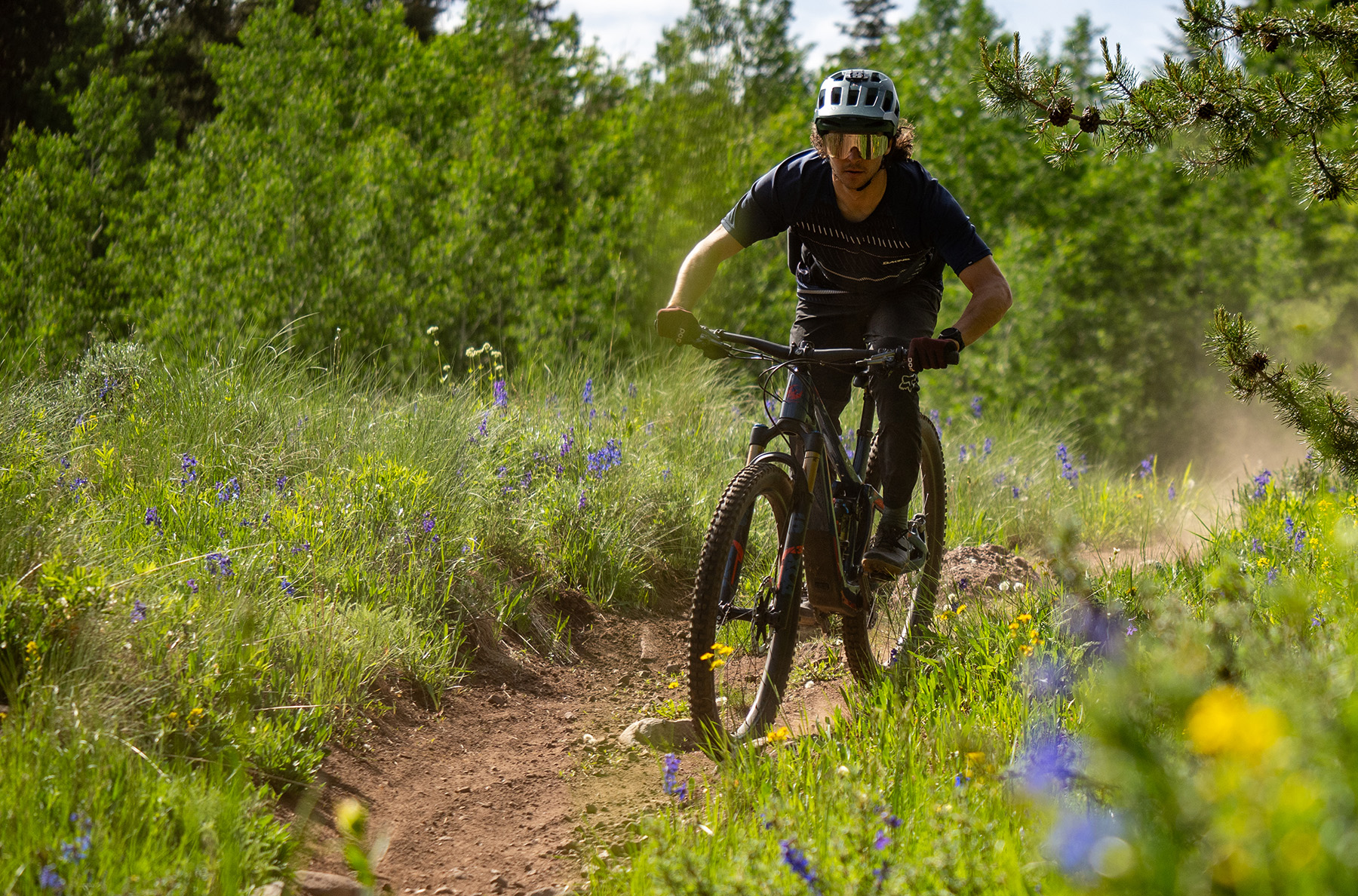
Climbing
Simon: Climbing is one of the Shuttle SL’s strong points. It surprised us with its stubborn ability to keep going up some of the relentlessly steep and tough sections that are challenging even on full-power eMTBs — and while it’s not as fast up them, nor can it usually make it as far, it puts in a strong showing that left us impressed.
We’ve tested quite a few light-assist eMTBs, and while they typically don’t have the horsepower to attack the impossibly steep technical climbs with the same conviction as their full-power counterparts, many of them have a way of surprising us with just how far up they make it. What they lack in power is often made up for with a less abrupt power delivery, equating to improved traction, and a more manageable demeanor. It’s these traits combined with a well-damped, supportive suspension, and an overall balanced feel, that make the Shuttle SL stand out as a technical climber.
The Shuttle SL’s front end comes up very easily with the help of a little pedal assist from the motor which makes getting up ledges smooth and controlled. On especially steep technical terrain, I like using the Fazua motor’s boost mode, which ups the peak power from 350 watts to 450 watts for 12 seconds. Although not a huge difference, it was noticeable enough that I often ended up using it multiple times on the same climb. It is worth noting, however, that it takes a little practice to fine-tune the timing of using boost mode to ensure you have the extra power when you need it — although not critical, it’s helpful not to mistime it and have those extra watts run out during a technical move.
On long, consistent climbs, the Shuttle SL has a comfortable seated climbing position, it is more on the upright side due to its not-too-long 478 mm reach, despite a not very steep 76º seat tube angle (low geometry position), but that suits me quite well.
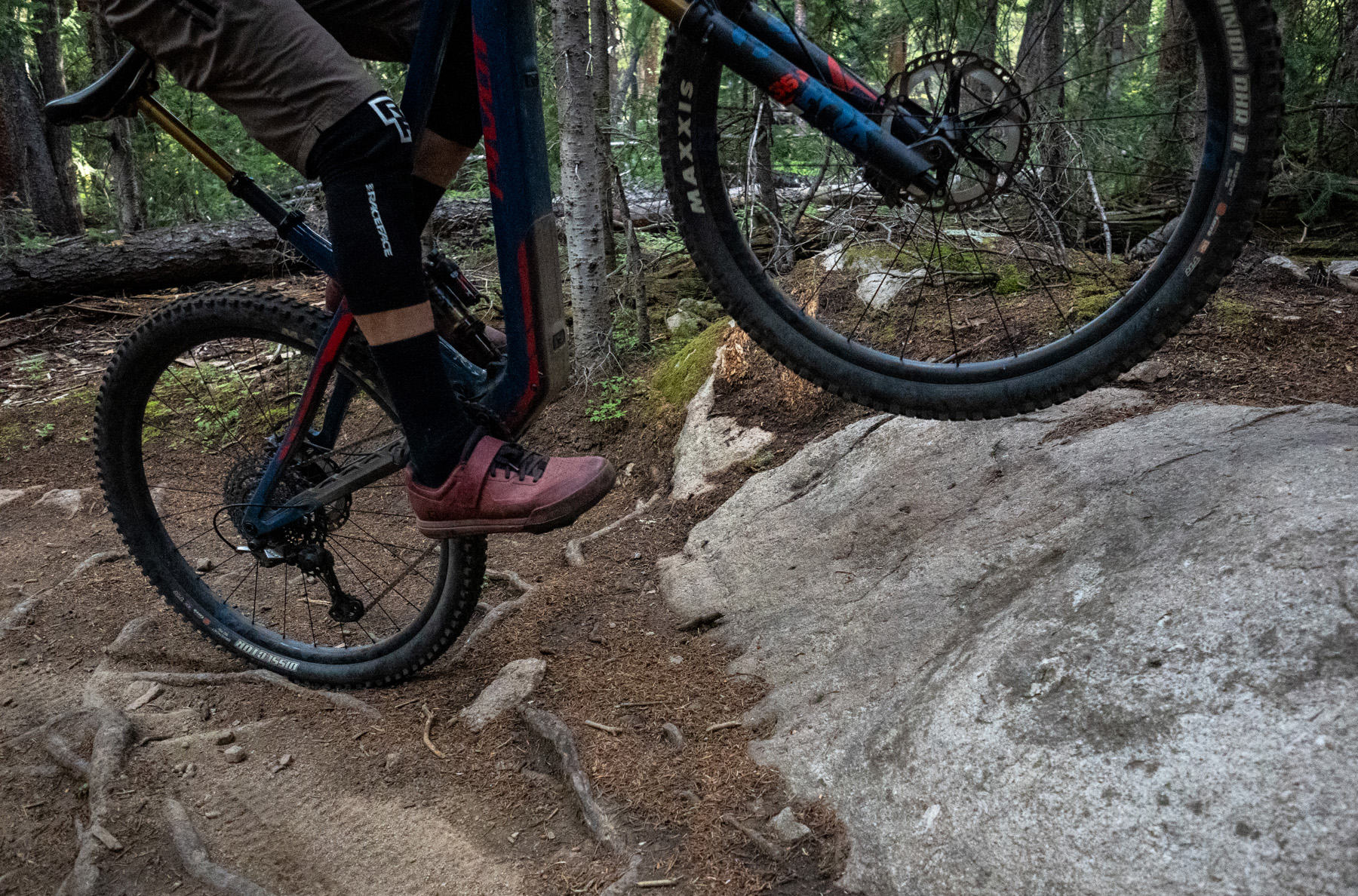
Dylan: I agree with everything Simon said here. The Shuttle SL is an exceptional climber, and its geometry, suspension, and Fazua Ride 60 drive system all deserve a share of the credit. The Shuttle SL’s geometry allowed me to get into an ideal pedaling position on both flatter roads and steep, technical singletrack climbs. Pivot’s unpowered Trail bikes have all exhibited a sprightly, efficient character when climbing, and the Shuttle SL’s suspension also felt sporty and responsive on the way up. Pair that with the Shuttle SL’s low weight and respectably powerful drive system, and you’ve got a light-assist bike that can power up just about any climb you will encounter. We did find its limits on very steep, technical, loose climbs, but it’s really only full-power eMTBs that can significantly outshine the Shuttle SL in these situations.
Descending
Simon: The first thing that stood out to me when going downhill on the Shuttle SL is just how familiar, natural, and confidence-inspiring it feels. If you didn’t know it had a motor, I’m not sure you’d be able to tell, because, at 39.38 lbs (17.86 kg), it’s not that much heavier than some current unpowered mountain bikes.
The fit of our Large Shuttle SL review bike is on the compact side, and the body position is fairly upright, which suits me and helped make me click with the Shuttle SL pretty much immediately. It doesn’t feel particularly biased towards fore or aft body positioning and instead prefers a neutral position. The size Large Shuttle SL doesn’t have a particularly long wheelbase nor a roomy cockpit, so the sweet spot is a little smaller than bikes like the S4 Norco Fluid VLT 130 (Full Review coming very soon), and results in it feeling not quite as stable at high speeds. As to be expected, the Shuttle SL feels more agile and maneuverable in slower tight conditions than the Fluid VLT 130.
Part of what makes the Shuttle SL confidence-inspiring is how good the 132 mm of rear suspension is. It has great sensitivity along with seemingly limitless bottom-out resistance that makes you question if the travel number is under-reported. In fact, I don’t remember any significant bottom-outs, and that’s after plenty of rowdy descending.
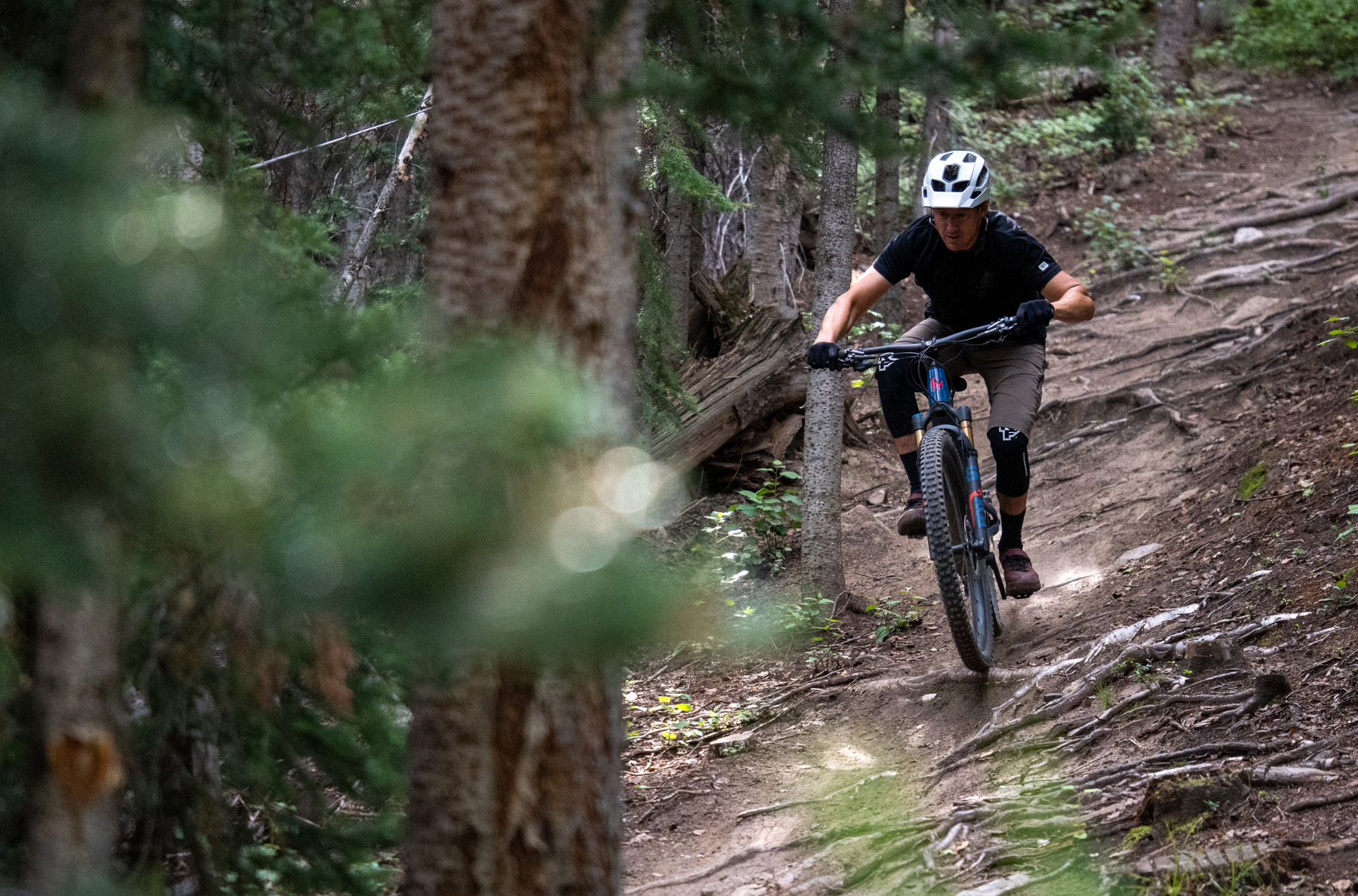
During high-speed, chunky descents, I appreciate the Shuttle SL’s low weight and agility, especially in situations where you have to act fast and get the front end up and over rocks and roots. It’s here where the Shuttle SL feels more like an unpowered bike and takes considerably less effort than full-powered eMTBs to ride smoothly.
Dylan: Enjoying the Shuttle SL on the way up was no surprise, but this bike did truly impress me on the way down. As Simon mentioned, the Shuttle SL’s 132 mm of rear suspension is very well-managed and I found that it provides head-scratching levels of traction and composure. My first ride on the Shuttle SL was on a trail that I usually ride on a 170 mm-travel Enduro bike, and I was very pleased with how little the Shuttle SL felt like it was asking me to back off and keep the speed and aggression in check.
On the other hand, this bike also doesn’t sacrifice much in the realm of maneuverability and playfulness. The Shuttle SL is easy to manage, thanks to its low weight and its moderate (but still quite relevant) geometry. Not only is it easy to steer and wiggle around tight corners and janky, technical moves, but the Shuttle SL is also eager to get into the air. Its suspension does feel poppy and responsive, and its impressive sub-40-lb weight also allows this bike to break free from gravity’s pull momentarily.
Put all of this together, and the Shuttle SL makes for a wildly versatile eMTB that feels at home in everything from mellow flow trails to steep, technical ones. Certain bikes in its class like the Norco Fluid VLT 130 provide a more responsive suspension feel, and others like the Trek Fuel EXe have a more traction-rich one, but the Shuttle SL strikes a beautiful middle ground that makes it a really safe bet for a lot of folks.
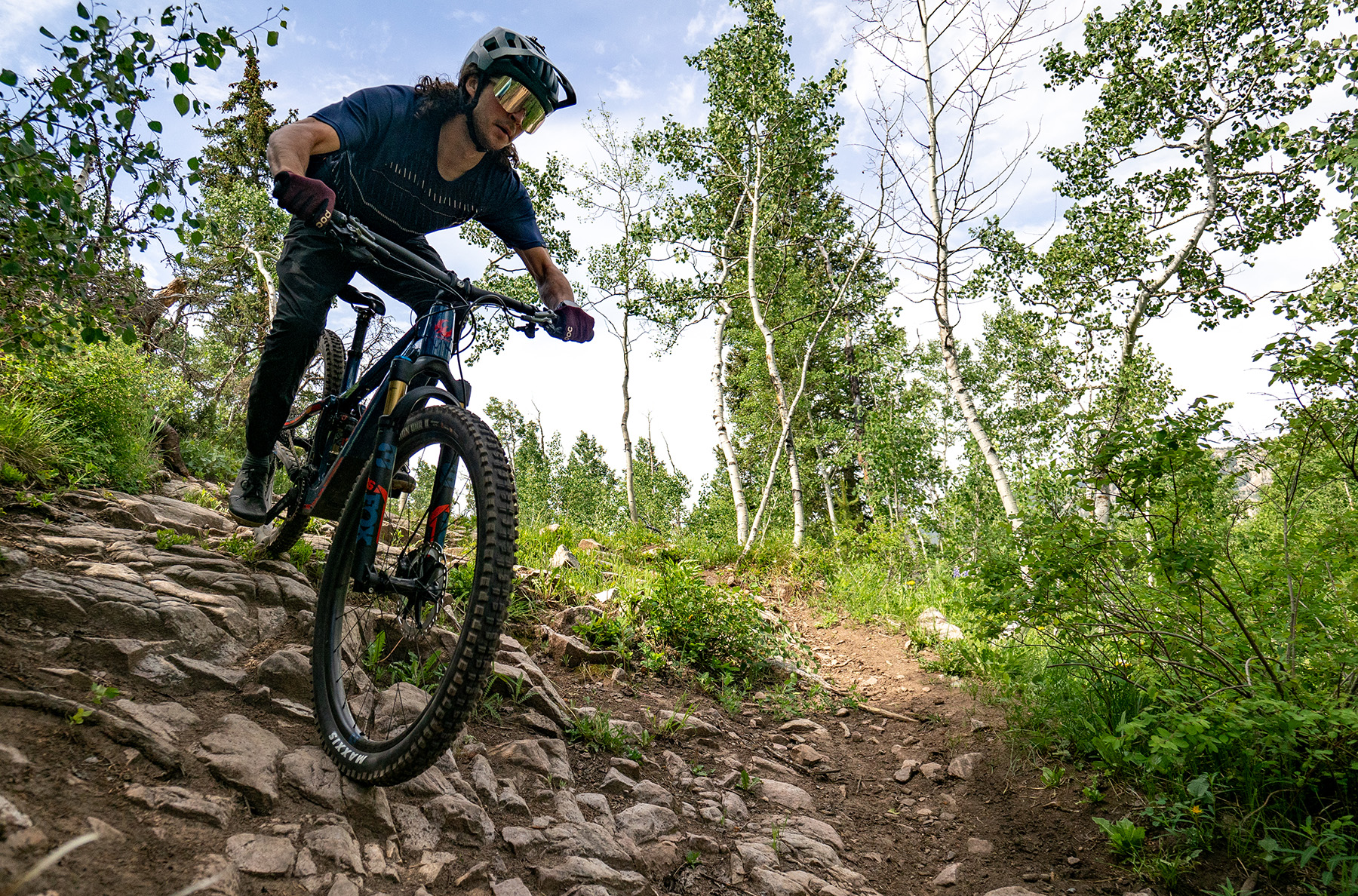
The Build
Simon: I generally like how Pivot specs their mountain bikes and eMTBs. They do a nice job of creating build levels with little overlap, plus they typically keep the number of builds in check, making the selection less overwhelming.
The Shuttle SL we tested came in the Team XTR build, and I have zero complaints and only complements for the components in that build. I’ll start with the Shimano XTR 4-piston brakes that offered plenty of power and modulation, aided no doubt by the 203 mm front and 180 mm rear rotors, the Shuttle SL never felt under-braked.
I think it’s fair to say Shimano’s XTR 12-speed cable-actuated drivetrains have definitely taken a back seat to SRAM’s AXS Transmission wireless electromechanical drivetrains recently, especially on eMTBs, which has a lot to do with the Transmission’s stellar under-load shifting performance. But Shimano XTR is still really bloody good, and the shifts are accurate and fast. Sure, you have to let off the power for just a split second during the shift, but you are rewarded with a satisfying and reliable click into gear.
I’m also happy to report that the Fox Transfer Factory seatpost has been reliable, something I haven’t experienced much lately on Transfer posts (though we’re talking about the now-prior-gen version, not the recently updated one). Other component highlights include the Fox Factory suspension and the Industry Nine Hydra Hubs, which are laced into Reynolds Black Label rims that so far haven’t needed any truing.

Dylan: I’m also really impressed with Pivot’s build kit offerings for the Shuttle SL. I am usually a bit disappointed by the braking performance of today’s eMTBs, but I am happy to report that the Shimano XTR 4-piston brakes did a great job of slowing down the Shuttle SL without losing much traction. While I’ve found a preference for SRAM Transmission drivetrains on eMTBs, I was fine with the Shimano XTR on the Shuttle SL. I think I’m not as high on it as Simon because I had to fiddle with the barrel adjuster a bit before handing the bike off to him, so you’re welcome, buddy.
The Fox Factory suspension on the Shuttle SL was also a highlight for me, and I think it deserves lots of credit for this bike’s stellar descending performance relative to its available travel. I think Pivot nailed the compression and rebound tunes on the Fox Float X rear shock, which was easy to get dialed quickly.
The wheelset was another highlight, and I think its Reynolds Black Label 309/289 XC carbon wheels also deserve some credit for the Shuttle SL’s damp, composed feel. Overall, the Team XTR build kit we tested leaves very little to be desired, though you’re definitely paying for it at $11,999 USD. While Pivot’s build kits can err on the pricier side of things, it’s worth mentioning that all of their carbon frames use high-modulus carbon, equivalent to offerings like Santa Cruz’s “CC” frames and Yeti’s “Turq” frames.
Drive System and Range
Simon: I go into detail about the Fazua Ride 60 drive system in our review of the Santa Cruz Heckler, and everything mostly applies to the Shuttle SL, including the tidy integration, power, range, and my perspective on the top tube display (LED Hub) and App. As far as the display goes, I still would prefer a more full-featured top tube display — mostly to convey the actual battery percentage. I talked about the Ring Controller on the Heckler SL being a bit buggy, but that wasn’t the case on the Shuttle SL, and I had no issues with it.
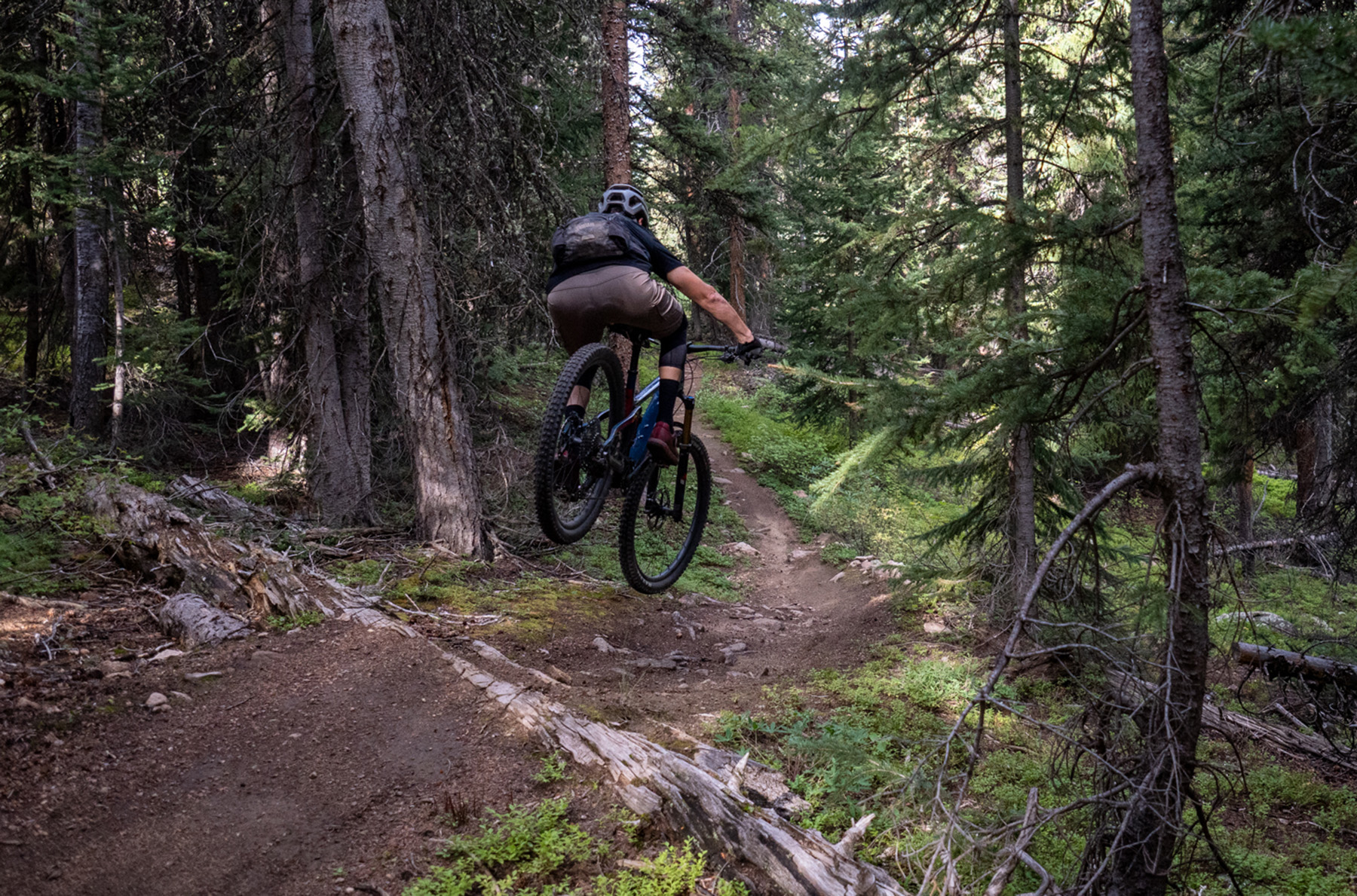
Unfortunately, the motor in our Shuttle SL developed an increasingly loud noise, which after some research, doesn’t sound too uncommon for some of the early production motors. Fazua has a downloadable Tool Box App that allows you to connect a laptop to the USB-C port under the display, which offers fairly comprehensive diagnostics, and also the ability to run a full system report that can be emailed to whoever is managing the potential warranty claim (in the United States, Fazua warranty claims are handled by QPB). After sending the system report, accompanied by a short video of the noise, it was determined that a replacement motor was in order.
The replacement motor arrived within a couple of weeks and installation was straightforward. As far as the new motor, it sounds great, as there have been quite a few updates to the original design that have addressed many of the known problems. Any eMTB motor can have issues, but I think how it is handled is more important than the issue itself, and Pivot and Fazua did great in that department. The entire process can be managed by Pivot dealers, but since I live in a town without one, I opted to handle the process myself (plus I enjoy working on bikes, especially eMTB drive systems).
I like the Fazua Ride 60 drive system’s torquey power delivery and the range from its 430 Wh battery. In comparison to the Bosch SX, the power advantage of the SX is noticeable, plus the SX generally feels smoother. On paper the gap in power is bigger than how it actually feels on the trail, and the Fazua Ride 60 has notably more range then the Bosch SX, which makes sense given the Ride 60 has less power and a larger battery (430 Wh versus 400 Wh).
In comparison to the TQ HPR50 drive system, the Fazua Ride 60 has more power and range, but the TQ has a much better integrated top tube display, is lighter, quieter, and like the Bosch SX, feels smoother.
In summary, there are now many options for drive systems in the light-assist category, and they all have different strengths, which means choosing what will power your eMTB comes down to what attributes are most important to you.

Dylan: Simon nailed all the most important points, and I’d like to emphasize the Shuttle SL’s excellent range. I found myself riding longer loops on the Shuttle SL than on other light-assist eMTBs, and I rarely found the need to take the Fazua Ride 60 system out of the most powerful assist level. I was able to get about 20 miles and 3,000 feet out of the Shuttle SL’s highest assist level — a significant feat for this class. Sure, it’s not as powerful as Bosch’s SX system, but the Fazua Ride 60 system on the Shuttle SL provides more range for the watt-hours.
Also worth mentioning is how easy it is to pedal the Shuttle SL without the drive system turned on. I think that much of this can be attributed to the Shuttle SL’s low weight and efficient pedaling platform, but the Ride 60’s lack of mechanical resistance is also a factor here. Don’t expect it to pedal like a fully non-motorized Trail bike, but it’s not much less efficient than the most sluggish unpowered MTBs out there, such as the high-pivot, heavy, Enduro-focused Norco Range (that, to its credit, outperforms almost any other single-crown bike on the way down).
Who’s It For?
Simon: Riders who put a premium on a low weight and a ride feel that has more in common with unpowered bikes, but at the same time offers the advantages of an eMTB, will get on very well with the Shuttle SL.
Dylan: I agree, but more specifically within the context of other light-assist eMTBs, the Shuttle SL brings a supreme level of versatility to the table that, while sacrificing some performance on the extreme ends of what you can expect from a mid-travel light-assist eMTB, also allows the Shuttle SL to handle a vast variety of trails in a convincing fashion. Not only that, but the Shuttle SL also offers a better range than other light-assist eMTBs and is a top choice for folks who don’t want to worry too much about range limitations with their eMTB, but who also aren’t willing to muscle around a bike that’s closer to 50 pounds.
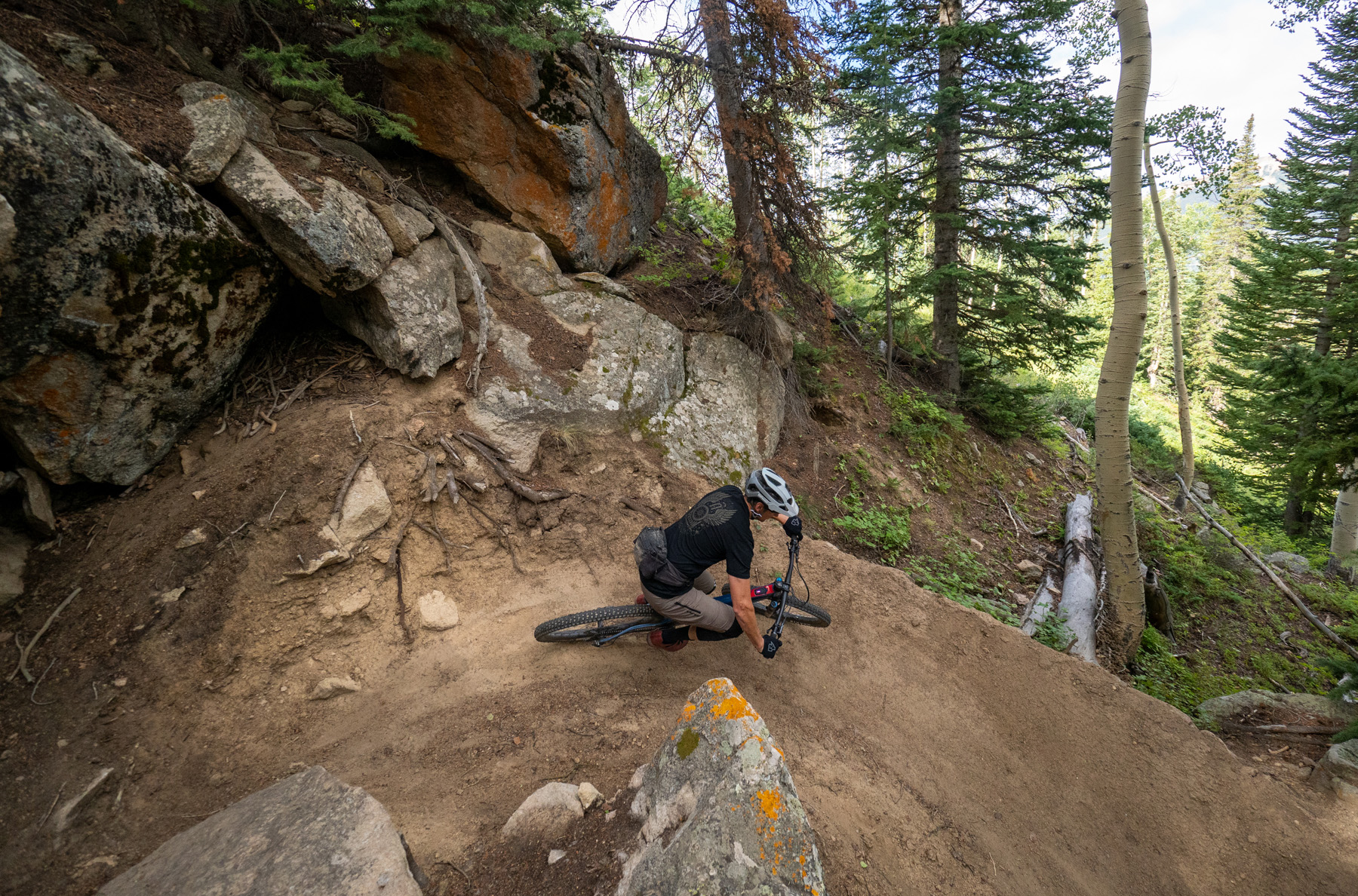
Bottom Line
Light assist eMTBs are an exercise in compromise, but the Shuttle SL has the least amount of compromise out of any of the light assist bikes we’ve been on to date. At 39.38 lbs (17.86 kg), it isn’t that much heavier than many non-powered mountain bikes, and its handling characteristics are also intuitive and natural-feeling, making for a more familiar ride than full-power eMTBs that are pushing 50 pounds. The Shuttle SL is a category leader among light-assist eMTBs, even two years after its launch.
Deep Dive Comparisons
BLISTER+ members and those who purchase our Digital Access Pass can check out our Deep Dive comparisons linked below. Get our Digital Access Pass to view all our Deep Dives and Flash Reviews, or become a BLISTER+ member today to get access to that and a LOT more, including the best worldwide Outdoor Injury Insurance, exclusive deals and discounts on skis, personalized gear recommendations from us, and much more.

Deep Dive: Pivot Shuttle SL
We compare the Pivot Shuttle SL to the Trek Fuel EXe, Norco Fluid VLT 130, Santa Cruz Heckler SL, Canyon Neuron:ONfly, and Cannondale Moterra SL.
Blister’s Flash Reviews and Deep Dives are accessible to those who purchase one of our paid subscriptions
To get our comprehensive Deep Dives and our initial, unfiltered reports on new gear, become a member and receive many other services, deals, and discounts.
If you’re already an active member, please log in.
(If you’re already logged in and a member in good standing and seeing this message in error, please refresh this page in your browser.)

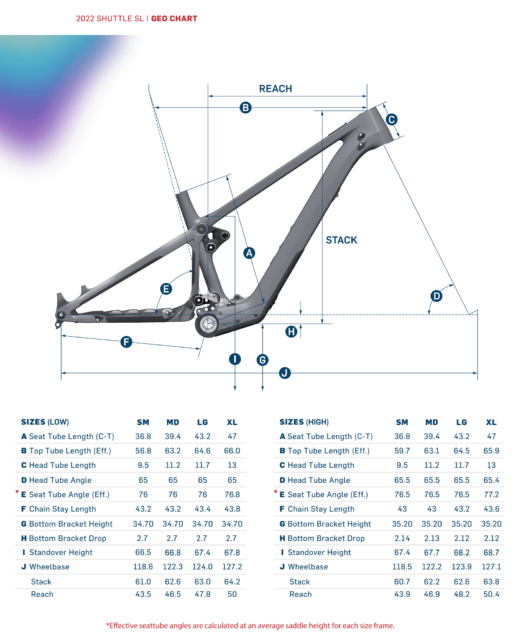
Cool bike. Please do a comparison to the new Fuel EXe if possible.
NOBODY does a better Deep Dive than Blister!
Please compare to the Orbea Rise
This Pivot, the Fuel EXE and Orbea definitely seem to be in a category all their own. It may just be a matter of which one you can get your hands on. Just picked my Wife up the Trek it is pretty amazing, the fact that you can turn everything off and it doesn’t feel like punishment is a real up side to their versatility. Get the work in for a trail ride, or power up and pull multiple laps on your favorite downhill run, and she can lift it up onto our bike rack without having to do some odd front squat variation.